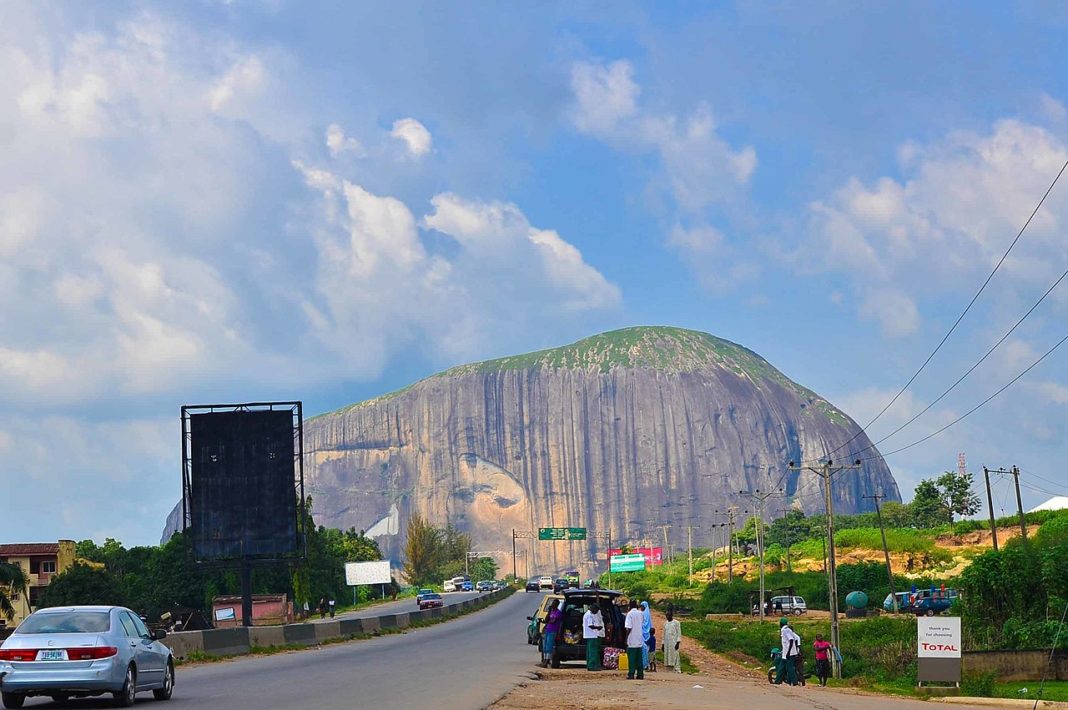Zuma Rock is a large natural monolith, or inselberg, an igneous intrusion composed of gabbro and granodiorite, in Niger State, Nigeria. It is located in the west of Nigeria’s capital, Abuja, along the main road from Abuja to Kaduna off Madala, and is sometimes referred to as the “Gateway to Abuja from Suleja”.
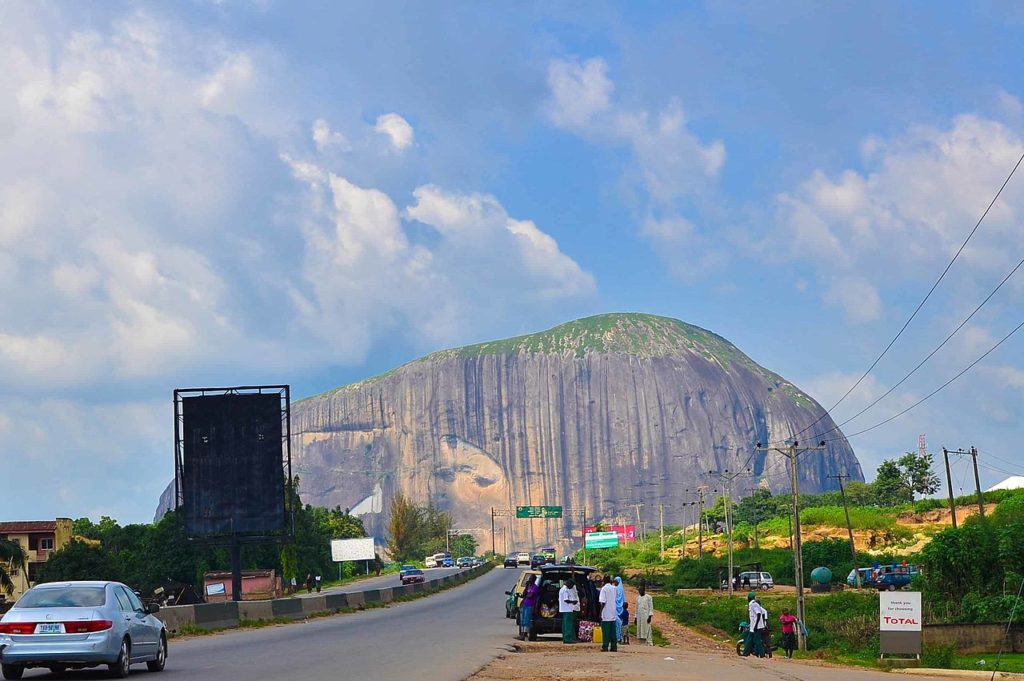
The rock was found in the 15th century by the Zuba people of Niger State, who called it Zuma, which could translate to “a place of guinea fowls,” due to their abundance around the rock. The Zuba people settled around the rock and came to see it as a spiritual guide, making sacrifices to the rock to keep them safe from harm. Because the landmark offered a clear view of the surrounding landscape, it was also used as a defensive position from other invading tribes.
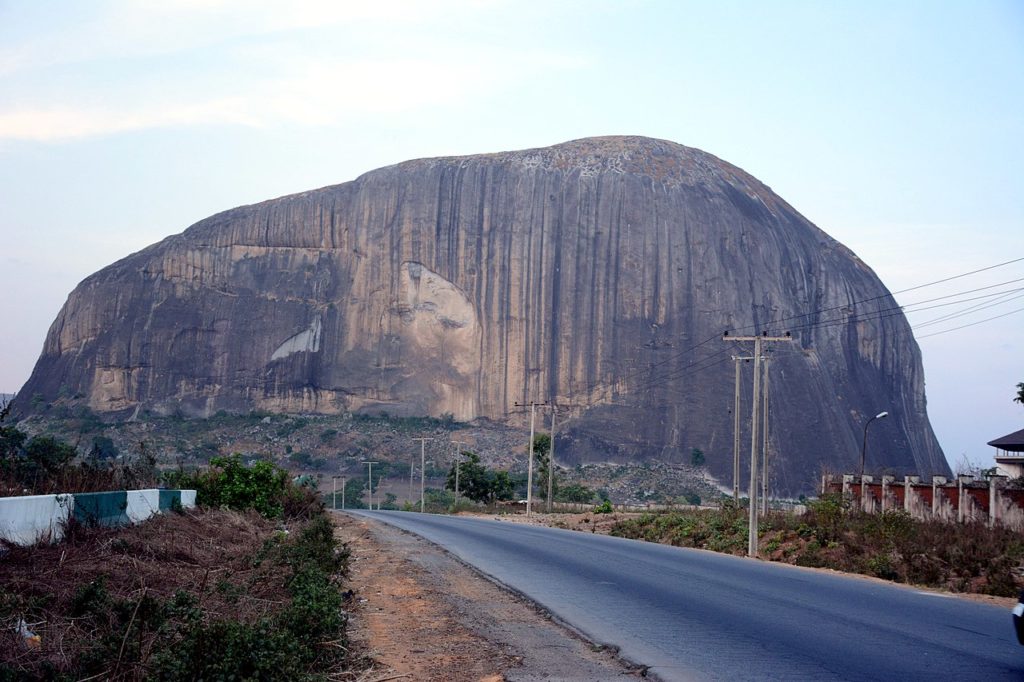
Zuma Rock is composed of igneous rock, specifically gabbro and granodiorite. The natural runoff of water has left the rock surface with a human-like facial feature imprinted on the rock, with features like mouth, nose, and eyes. The rock tends to get alight with fire during the rainy season. The friction created moving rocks caused by the sliding slope of the rock and during this, the fire comes up.
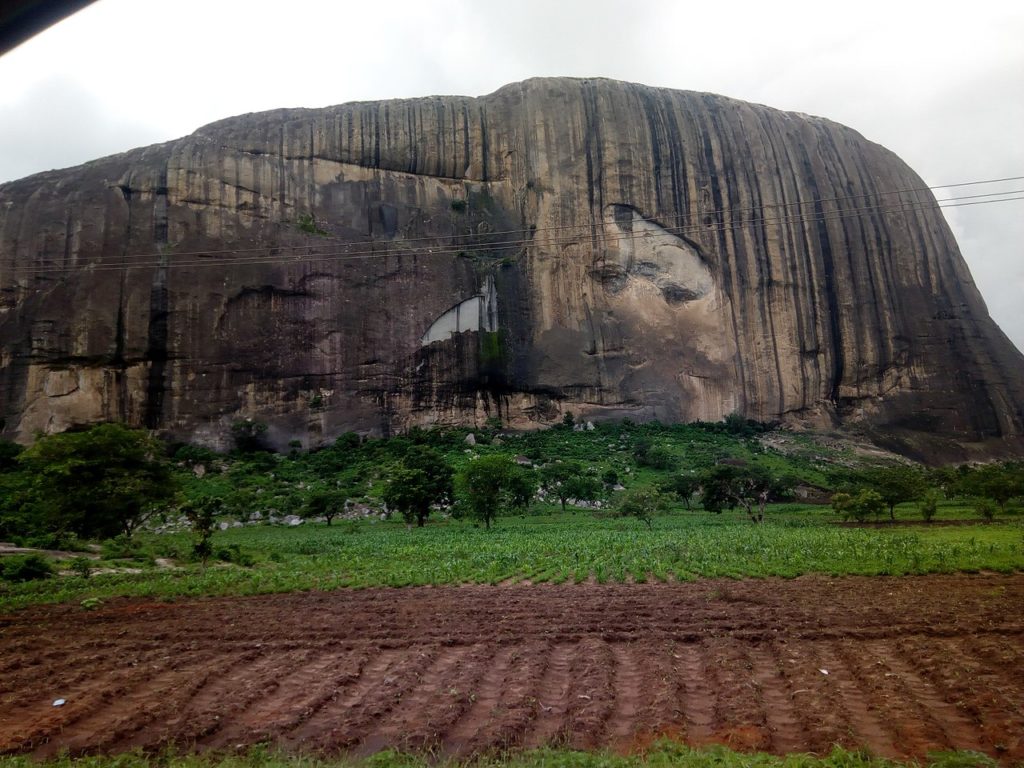
Zuma Rock is very tall by the standards of Nigerian geography. It is over four times taller than NECOM house (Lagos’ tallest skyscraper, as of 1979) and it is taller than Aso Rock and Olumo Rock combined.
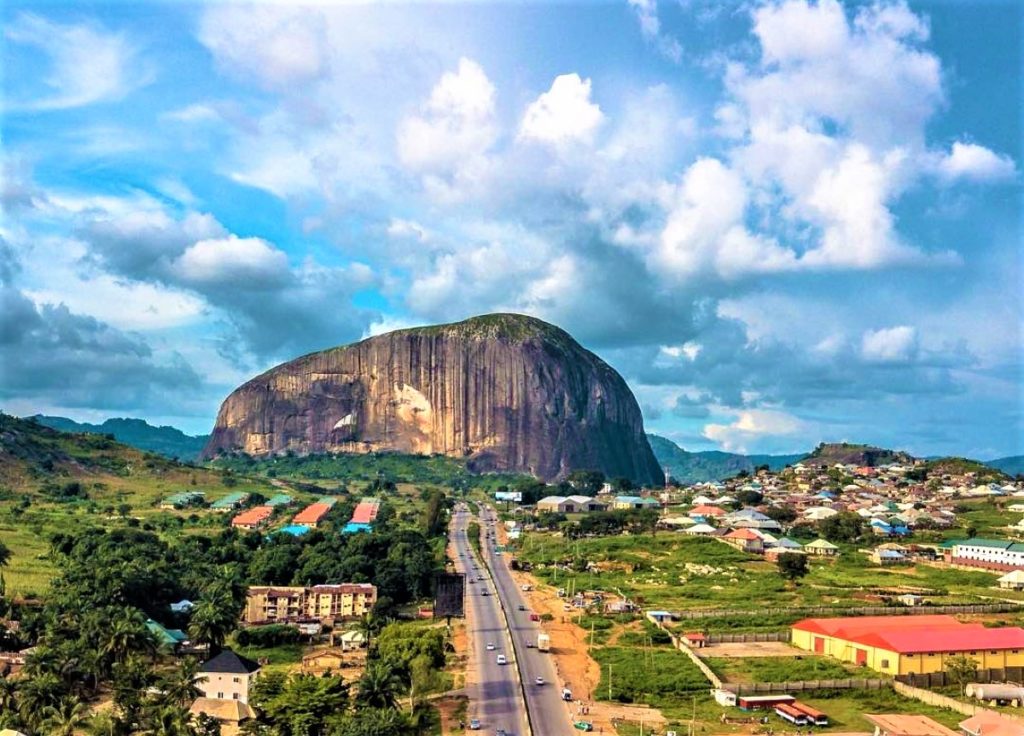
The rock has become one of the most prominent landmarks in Nigeria, Zuma Rock is depicted on the 100 naira note. It was used for a defensive retreat by the Gbagyi people against invading neighboring tribes during intertribal wars.
According to the Internet





